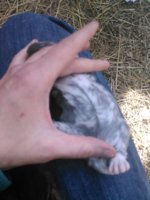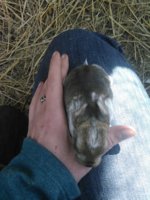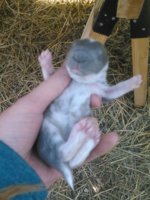GypsyG
Loving the herd life
Hey guys. I am very confused. I have a non traditionally colored 100% broken NZ doe. She is broken, so both times I have bred her I bred her to a solid buck. Both litters were 100% broken. She certainly does not appear to be a Charlie! Her first litter was only four, so I was wrote it off as a genetic Yahtzee... But when she had her current litter of seven I started thinking there might be something odd going on. They are all broken, but some are odd with just a bit of roaning on their heads, and white legs and belly's, and still others are so white the look like charlies.
Anyone have any thoughts on this? Could there be some other pattern gene that I'm unaware of at play here?
Here's Mom, Roanie -

Dad, Barry

Litter -

I'll take some better updated litter pictures later today.
It's not coming from dad, when bred with self does he has 100% self colored litters.
Any ideas? I'm super confused.
Anyone have any thoughts on this? Could there be some other pattern gene that I'm unaware of at play here?
Here's Mom, Roanie -
Dad, Barry
Litter -
I'll take some better updated litter pictures later today.
It's not coming from dad, when bred with self does he has 100% self colored litters.
Any ideas? I'm super confused.










